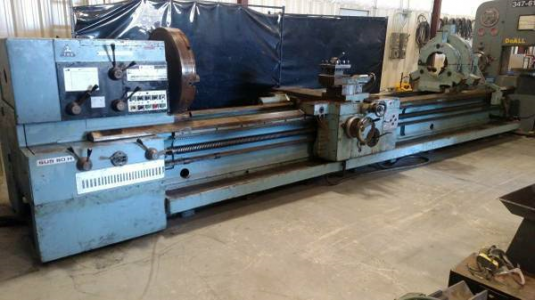- Joined
- Nov 14, 2016
- Messages
- 3,002
I see what you're talking about. The 1127 is a better lathe. However, is this the "at least buy this" mind set? I can always go to the next size up which can be a better lathe as well. It's almost $1000 more than the 1022/30 lathe. Wouldn't I be fine with the 1022/30 lathe? Or is the D1-4 camlock worth the extra $$ amongst the other features?
I also plan to mount the unit on top of a tool chest with a thick top. It can handle 1,100 lbs and would be great to keep all the tooling co-located with the unit.
This is where it helps to have a solid idea of what you want to do. Moving up to an 11 or 12" lathe will get you more power, and a larger spindle bore as well as a larger envelope all around. It also usually means moving up to 220v, and pretty much eliminates any chance of moving the lathe without mechanical assistance.
It is also a very slippery slope. The 1022 is $2300, but for only $900 more you can get the 1127, and now you are only $300 from a 12x28. Once there its only another $500 for the 1236T "Ultra Precision" and that gets you within $1000 of the 1340GT, I think you see where this is headed.
I'm going to buck the trend here a bit. Since you really don't know how you are going to use the lathe, you might consider going smaller (and cheaper) to start. You can learn the basics on a smaller lathe just as easily as the larger, and for the kinds of things you described in you first post they might be just fine. An 8x16 or 9x20 can be had new for less than $1500 and often for less than $1000 used. Tooling is generally cheaper for smaller lathes too. Use that lathe to learn and figure out your needs / wants.
Maybe that small lathe will be all you need, maybe it will help you decide you really need a 20x84 like this https://bakersfield.craigslist.org/tls/d/santa-barbara-industrial-metal-lathe/6779698831.html
Also once you have played with the lathe for a while and hung around here, you will get a much better feel for what to look at on a used lathe.
$2500 is a lot of money to spend on something that may not meet your needs. Small lathes also seem to hold their value a little better, because there is a much larger market for them. The 9" and 10" Logan, Southbend, and Atlas lathes can often be found at similar prices to larger 12-14" lathes because almost anybody can fit these small/medium size lathes into their shop.
Notice the low price on the monster I linked to above. It takes a special kind of dedication to provide a home to a 13 foot long 6000lb lathe.


